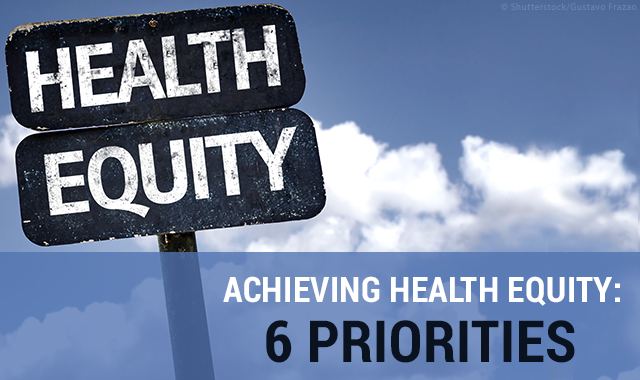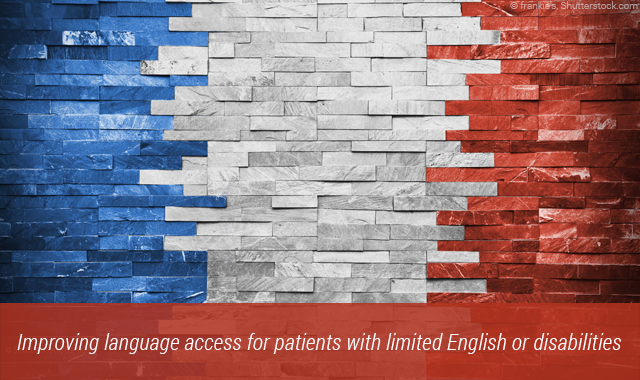CMS' 6 health equity problems: What execs should know
The Centers for Medicare & Medicaid Services Office of Minority Health, unveiled the first CMS plan to address health equity in Medicare.There are six key priorities of the CMS Equity Plan for Medicare.


The Centers for Medicare & Medicaid Services (CMS) Office of Minority Health (CMS OMH), unveiled the first CMS plan to address health equity in Medicare.
The CMS Equity Plan for Improving Quality in Medicare aims to reduce health disparities in four years. Health disparities adversely affect groups of people who have systematically experienced greater obstacles to health based on their: racial or ethnic group; religion; socioeconomic status; gender; age; mental health; cognitive, sensory, or physical disability; sexual orientation or gender identity; geographic location; or other characteristics historically linked to discrimination or exclusion.
“CMS’ launch of the Health Equity Program acknowledges that our nation’s healthcare system is currently ill-equipped to provide high-quality care to low-income patient populations,” says Colin LeClair, ConcertoHealth senior vice president, product and business development. “CMS will use its regulatory authority to ensure that providers and payers develop innovative healthcare delivery models that accommodate the social and clinical needs of low-income patients.”
The health of poorer Americans and their lack of access to healthcare services profoundly affect the economy, according to Lee A. Norman, MD, MHS, MBA, senior vice president and chief medical officer, University of Kansas Hospital, Kansas City. “At its core, health disparities-low-income populations, sub-standard housing, poor health literacy, caregiver maldistribution, language barriers-drive up costs and no business sector can escape it,” Norman says.
“Managed care can’t sequester itself from it,” he continues. “Cost shifting to commercial payers will increase as health disparities go up. Health disparities are not only an enrollee concern, but a public health concern, as well. Executive will need to look at small subpopulations and not an aggregated population. They will need to ‘hot spot’-which means looking to see if there’s a geographic area where conditions seem to cluster.”
With the expansion of the Medicaid-eligible population and the aging of the baby boomer generation, LeClair expects to see the number of dual-eligible, and partial-dual beneficiaries increase significantly over the coming years, creating additional strain on a health system primarily designed to accommodate community-well patients.
As time goes on, it will become clear as to what financial incentives and regulations will be put into play to encourage providers to offer better access to underserved populations, according to Gerry Wedig, professor at Simon Business School at the University of Rochester, Rochester, N.Y.
“At the same time, the question is whether this will be a priority of the next administration since it will probably be that long before something really gets started,” Wedig says.
There are six key priorities of the CMS Equity Plan for Medicare:



“In the context of delivering care to low-income populations, managed care executives have an opportunity to go beyond the standard HEDIS measures, to assess patient activation and engagement, to assess social barriers to care, and to document other environmental issues that could undermine the patient’s care plan,” LeClaire says.
At the University of Kansas Hospital, standardized data and collaboration are key. The hospital is a member of the University HealthSystem Consortium, an alliance of leading nonprofit academic medical centers.
“Standardized data allows us to compare those regions and look at populations of providers that may be having better outcomes,” Norman says. “That’s what drive success. We compare to each other based on equity and what we measure is shown in our clinical outcomes [gender, race socioeconomic status].”
“I assume that this is done to achieve a baseline of differences in access and health status for certain groups,” says Wedig. “Identifying a baseline is the first step toward identifying what needs to be done.”



Managed care executives whose organizations serve these patient populations are better equipped than CMS to measure the relationship between the social barriers to care and patient outcomes, according to LeClair.
“These organizations can identify causal relationships and help CMS to focus interventions on those activities that will have the greatest impact on quality and access,” he says. “Managed care organizations are also in a position to test the efficacy of different patient engagement strategies and use their findings to positively influence health policy and MCO performance measurement. The alternative to sharing those best practices is likely a more blunt CMS-lead regulatory solution.”
Norman believes this is a perfect opportunity for managed care to seize on their creativity.
“it is not sufficient to say: They have insurance through Medicaid, what’s their problem? It doesn’t work to say to a population of patients who don’t speak the language or have good nutritional options. It means looking at agency programs and working with communities and public health departments. A whole health system redesign.”



The most significant barriers to healthcare access for these populations are environmental and social, according to LeClair. “The vast majority of healthcare providers are neither incentivized nor equipped to proactively identify these social barriers and eliminate them in order to free patients to address their health concerns,” he says. “For example, if a patient wakes up each morning worried about whether or not they’ll eat today, or whether or not the heat will turn on, those basic needs will take priority over getting to the pharmacy to pick up their medications. Providers must be incentivized to improve patient outcomes and must be subsidized/equipped to restructure their delivery model in order to take a more preventive and holistic approach to patient care.”
Performance-based payment models with heavy emphasis on primary, preventive care, is at the core of this solution, LeClair says.
“Presumably this will be a focus area no matter what disparities are identified,” Wedig says. “This may refer to any set of policies that would give provider’s information on where needs exist and perhaps subsidies or incentives for them to meet the needs.”



Managed care must look beyond underwriting risks and get into the business of healthcare communication and marketing, according to Norman.
“How do we market to enrollees about healthy habits?” he asks. “How do we communicate, market, sell, how do adult learners learn? What is the catalyst of change?”
This is fairly common when Medicare experiments with new programs, Wedig says. “Pilot programs are launched on a smaller scale and where successful the results are rolled out to a larger population,” he says.



Ideally, provider practices should make every effort to accommodate the unique linguistics and cultural demands of the populations they serve, according to LeClair.
“However the diversity of some low-income populations across relatively small geographies can make it very difficult for an individual practice to accommodate a broad range of languages,” he says. “Medicare should consider subsidizing translation services to allow patients to interact with healthcare professionals at the nearest appropriate access point with the help of telephonic translation.”
“We need to go beyond printing brochures in Spanish,” Norman says. “Supporting grassroots and support public policy. Managed care executives have terrific clout and lobbying ability to create grassroots English language programs. I don’t think people who are isolated with language barriers want to be isolated.”


CMS must address the logistical and social barriers to healthcare access, according to LeClair. “This is a distant first priority over deploying new HEDIS measures and performance reporting. This may include more broadly supporting transportation to and from ambulatory care, and patient incentives for accessing primary care or completing an annual wellness visit. CMS must eliminate barriers to primary care and social worker services to improve quality and access for low-income populations,” he says.
“Whole community clinic system have been under-funded,” Norman says. “Innovative community clinics are lower-cost settings and provide easy access and early care. A blinding flash of the obvious: with community clinics we won’t need as many back doors to hospital. If we can avoid emergency department use and hospitalization, we are better off.”
“One can imagine that members of some groups may reside in neighborhoods and areas where providers choose not to place their offices,” Wedig says. “They may also have limited access to transportation. This reduces access. The question is how to overcome this. For example, in the past providers in rural areas have received special subsidies to assure access for rural residents.”
Doing More and Saving More with Primary in Home Care
September 1st 2021In this week’s episode of Tuning In to the C-Suite podcast, MHE Associate Editor Briana Contreras interviewed VillageMD’s Senior Medical Director of Village Medical at Home, Dr. Tom Cornwell. Dr. Cornwell discussed the main benefits of primary care at home, which includes the benefit of cost savings for patients, maintaining control of hospital readmissions and others. Dr. Cornwell also noted what has changed in the industry of at-home care and if there has been interest from payers like insurance companies and medicare in the service.
Listen